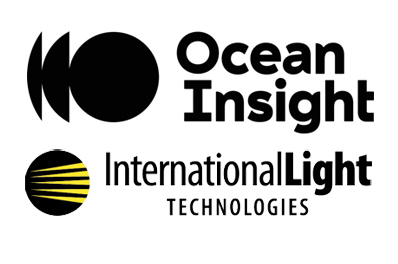22 Feb 2022
Acquisition expands company’s portfolio in light measurement and detection; Ocean’s spectrometers support research at European XFEL.

Ocean’s parent company Halma has acquired ILT.
Ocean’s parent company Halma, the “global group of technology companies focused on growing a safer, cleaner and healthier world”, confirmed the acquisition on February 21st, thus:
“Halma has acquired International Light Technologies for its Environmental & Analysis sector business, Ocean Insight. The consideration for ILT is $26.6 million (approximately £19.5 million) on a cash and debt-free basis, which is payable in cash and funded from Halma’s existing facilities.”
The statement continued, “ILT’s unaudited revenue for the year to October 2021 was $9.9m, and earnings before interest and tax was $2.7m.” Andrew Williams, Group Chief Executive of Halma, commented: “ILT’s focus on the generation and measurement of light is highly aligned with Ocean Insight’s mission to use the measurement of light to expand scientific discovery, reduce waste and improve the quality of life.”
Based in Peabody, Mass., USA, ILT’s portfolio of light sources and light measurement systems will expand Ocean Insight’s presence as an international leader in light measurement and detection systems and enhances Ocean’s ability to apply spectral knowledge to solve measurement challenges across different markets, industries, and sectors.
Dr. Michael Edwards, President of Ocean Insight, commented, “International Light Technologies is a leader in developing highly customized light generation and light measurement solutions for some of the world's largest companies.
“By combining [the companies], we are advancing our ability to meet the needs of an increasingly diverse range of applications and industries by leveraging the power of light to amplify optical sensing product innovations that make the world safer, cleaner, healthier for everyone, every day.”
Ocean spectrometers support research at European XFELOcean Insight has also announced that its spectrometers are helping researchers to improve experiments conducted at the European X-ray Free-Electron Laser (XFEL) facility, “paving the way to better study the light-matter interactions of species in gaseous media.”
An international team of researchers at XFEL is using a pair of Ocean Insight Ocean HDX-XR spectrometers as part of a project to improve the temporal resolution of experiments conducted using the organization’s Small Quantum Systems (SGS) instrument. The SGS is used to investigate light-matter interactions of atoms, molecules and nanoparticles at lower-energy (“soft”) X-ray wavelengths.
XFELs produce high-intensity, short-duration pulses that help scientists to better understand the structure and working mechanisms of atoms, biomolecules and chemicals. XFELs have been critical in studying viruses – including the spike protein of coronavirus -- and enabling the development of vaccines.
As reported in the open-access paper “Timing and X-ray pulse characterization at the Small Quantum Systems instrument of the European X-ray Free Electron Laser” (Optics Express, Vol. 29, No. 23/8 November 2021), laser engineer Patrik Grychtol and team of researchers from throughout Europe were able to apply spectral encoding and other techniques to improve the temporal resolution of pump-probe experiments at the SGS instrument. The work helped to quantify certain timing parameters and to characterize X-ray pulse duration.
During the experiment, part of an optical laser beam was measured using an Ocean HDX-XR spectrometer (200-1100 nm) as a reference spectrometer. Ocean HDX-XR is responsive from 200-1100 nm, is thermally stable, and has excellent peak symmetry. A second Ocean HDX-XR measured a soft X-ray pulse mapped onto the optical laser spectrum. As part of the experiment benchmarking process, these spectra were captured for each pair of XFEL/optical laser pulses.
Ultimately, as the researchers point out in their paper, efforts to improve overall performance at the European XFEL facility are ongoing, with Ocean Insight spectrometers among the tools available to help monitor different characteristics of these important experiment processes.
| © 2025 SPIE Europe |
|